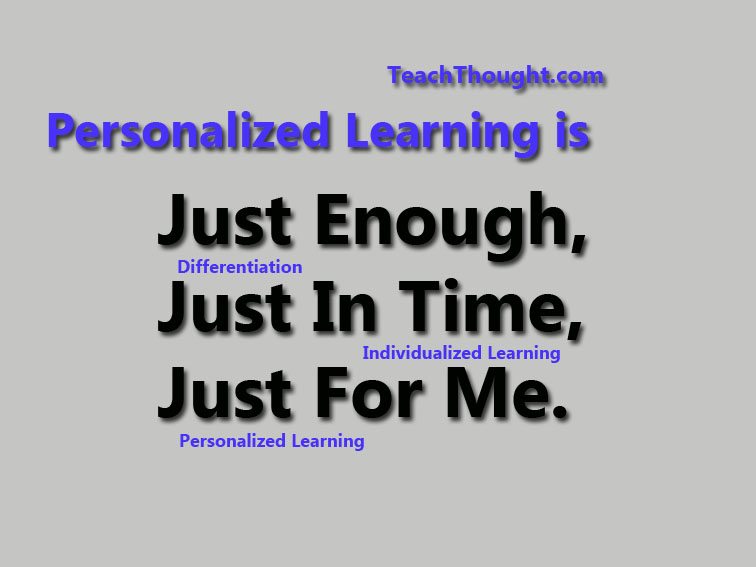What Is A Simple Way To Clarify Personalized Learning?
by Terry Heick
Personalized learning is a term that’s becoming increasingly common as education becomes more ambitious and self-aware, moving away from whole class sit-and-get towards a model where new tools (e.g., apps and learning simulations) and new thinking (e.g., blended learning and game-based learning) are used to craft learning experiences that actually fill an existing need.
The fact that as educators we have to shift our perspective to make sense of this is interesting.
Quick story–I’m an old man, so my lower back hurts. I recently sought out a chiropractor to help me run/jump/lift the way I could even five years ago. After taking X-rays and reviewing film from a recent MRI, they created a routine of exercises for me, and for 4 weeks I went in 3 days a week to complete this routine, along with a handful of other treatments.
The unsettling thing for me was that no one was extracting new data–no new information, range of motion, pain thresholds, examine results, or other nuggets that could then be used to modify and personalize the more general treatment plan. As I looked around, the overlap of the course of treatment between myself and the patients around me was about 90%.
We did almost the same things, the same ways, for the same amount of time, in the same order when beyond a universal need for core strength, there is little chance that our bodies, injuries, and overall needs were so similar.
“Just in time, just enough, and just for me” is an easy way to articulate the concept of differentiation/personalization of learning, much in the same way “Show me, help me, let me” captures the spirit of the Gradual Release of Responsibility model so well.
If we could just be as insulted by whole class direct instruction (supplemented with only brief, minor attempts to truly clarify personalized learning) as I am when I receive the same in a chiropractor’s office.

